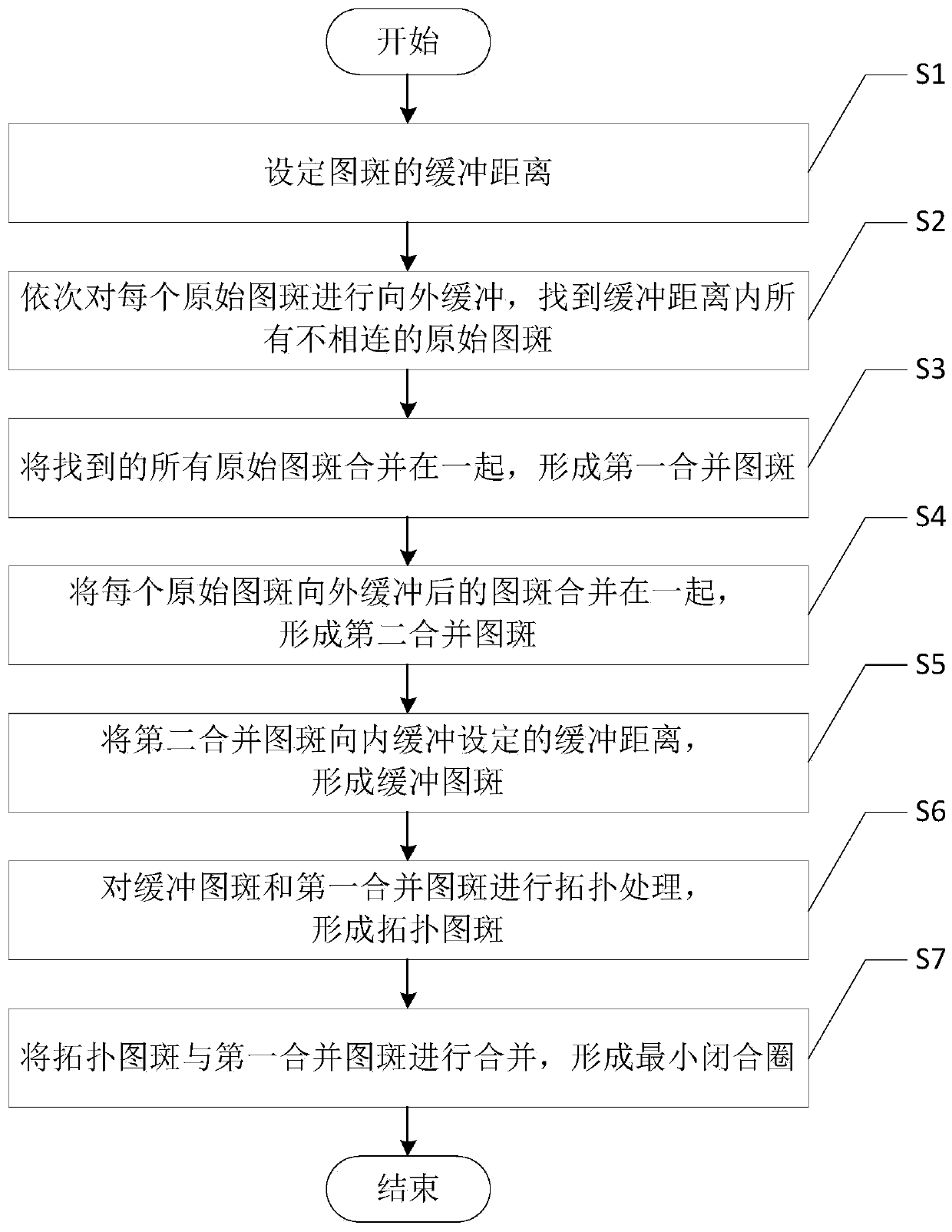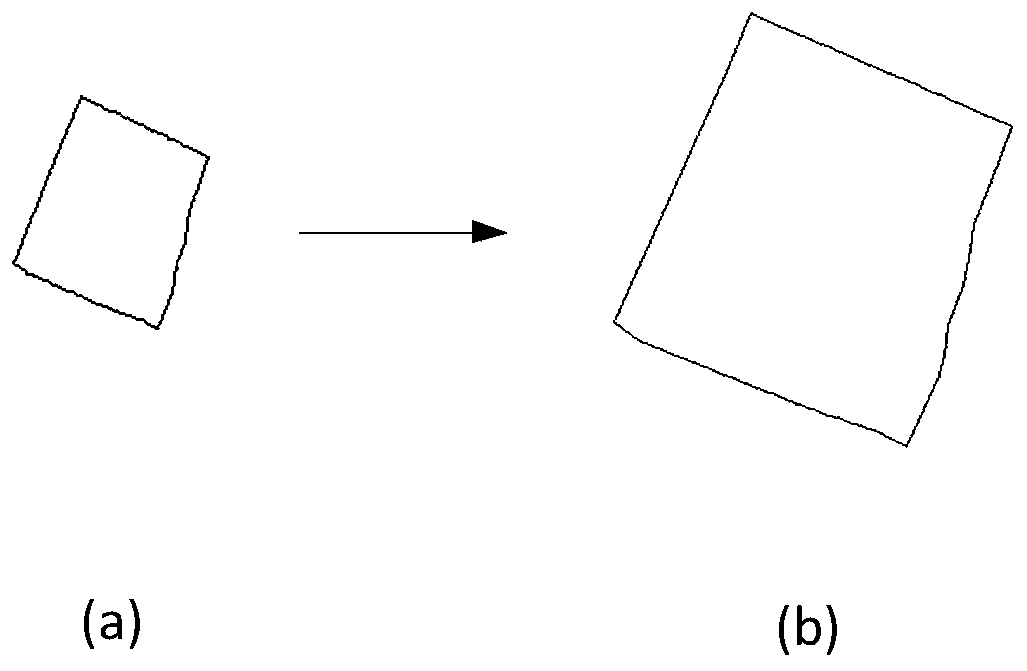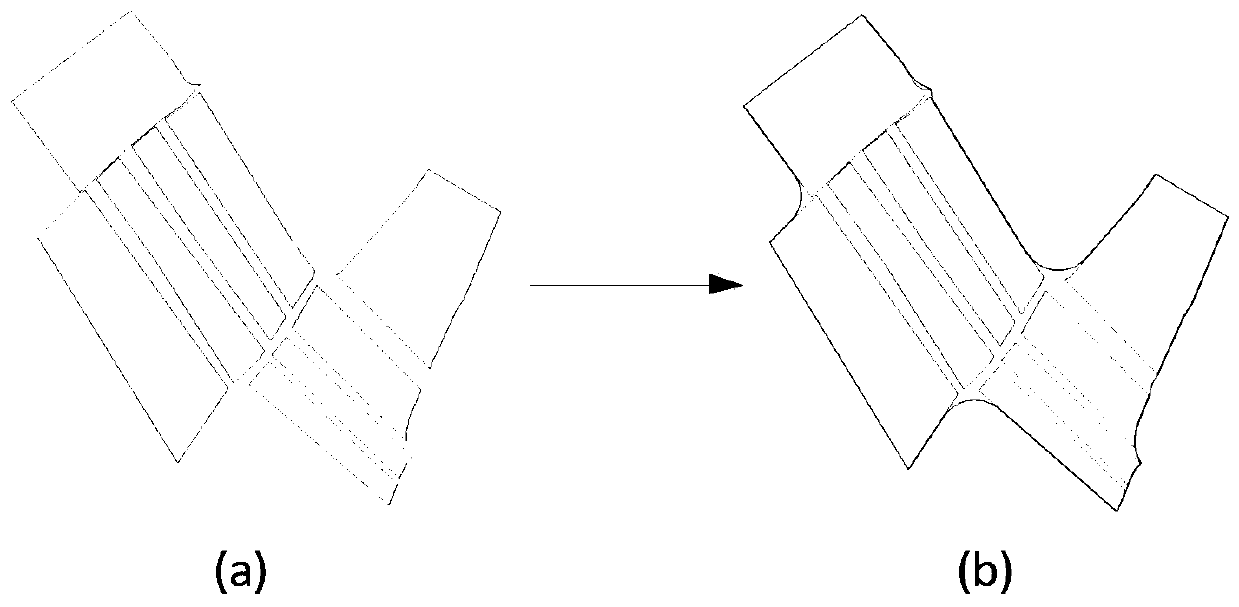Minimum closed loop automatic forming method applied to disconnected pattern spots
A closed-loop and patch technology, applied in the field of patch processing, can solve the problems of high cost, uneven data quality, and large labor input, so as to improve efficiency and quality, reduce data quality problems, and save data processing costs. Effect
- Summary
- Abstract
- Description
- Claims
- Application Information
AI Technical Summary
Problems solved by technology
Method used
Image
Examples
Embodiment 1
[0031] Such as figure 1 As shown, a method for automatically forming a minimum closed circle applied to disjoint map spots is characterized in that it includes the following steps:
[0032] S1. Set the buffer distance of the pattern;
[0033] S2. Perform outward buffering for each original patch in turn, and find all unconnected original patches within the buffer distance;
[0034] S3. Merging all the found original patches together to form a first merged patch;
[0035] S4. Merge the outwardly buffered patches of each original patch to form a second merged patch;
[0036] S5. Buffering the second merged patch inward by a set buffer distance to form a buffered patch;
[0037] S6. Perform topological processing on the buffered patch and the first combined patch to form a topological patch;
[0038] S7. Merge the topological patch with the first merged patch to form a minimum closed circle.
[0039] The buffer distance in step S1 of the embodiment of the present invention i...
specific example
[0057] Take the original spot A, the original spot B, the original spot C, and the original spot D as examples, where the distance between the original spot A and the original spot B is 25 meters, and the distance between the original spot B and the original spot The distance between C is 10 meters, and the distance between original spot C and original spot D is 60 meters;
[0058] 1) Set the buffer distance of the map spot to 50 meters;
[0059] 2) Taking the original patch A as the starting patch, the original patch A is buffered outward by 50 meters to form a patch A', which is found by overlapping topology analysis between the patch A' and other original patches within the set range. Original patch B;
[0060] 3) The original patch B is buffered outward by 50 meters to form a patch B', and the original patch C is found by performing overlapping topology analysis between the patch B' and other original patches within the set range;
[0061] 4) The original patch C is buff...
PUM
 Login to View More
Login to View More Abstract
Description
Claims
Application Information
 Login to View More
Login to View More - R&D
- Intellectual Property
- Life Sciences
- Materials
- Tech Scout
- Unparalleled Data Quality
- Higher Quality Content
- 60% Fewer Hallucinations
Browse by: Latest US Patents, China's latest patents, Technical Efficacy Thesaurus, Application Domain, Technology Topic, Popular Technical Reports.
© 2025 PatSnap. All rights reserved.Legal|Privacy policy|Modern Slavery Act Transparency Statement|Sitemap|About US| Contact US: help@patsnap.com



